|
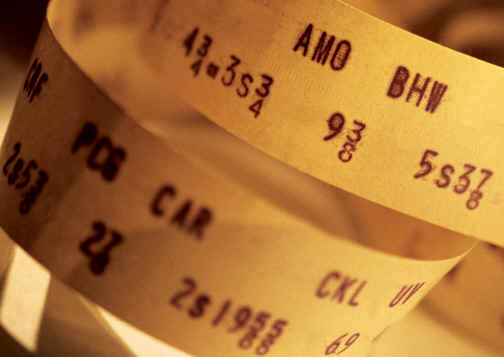
Western Union 3-A : By Douglas A.
Kerr
For many years stock tickers of the "Edison" genre (such
as the Western Union 3-A) were used for stock and commodity
quotations, sporting event result reporting (this it turns out being
of most interest to bookmakers), and similar services.
As teletypewriter-based tickers (such as the infamous Western Union
5-A, the "Black Box". made by Teletype Corporation), came
into use, Edison-style tickers retired from stock quotation service
were used to expand inexpensive sporting event reporting services.
The Western Union 3-A that I used to own, and which we will discuss
here, had at the end of its life been in the latter service. I
acquired it from a technician at a Western Union teletypewriter repair
shop in exchange for a box of donuts from the donut shop just down the
street.
This figure shows the mechanisms of interest:
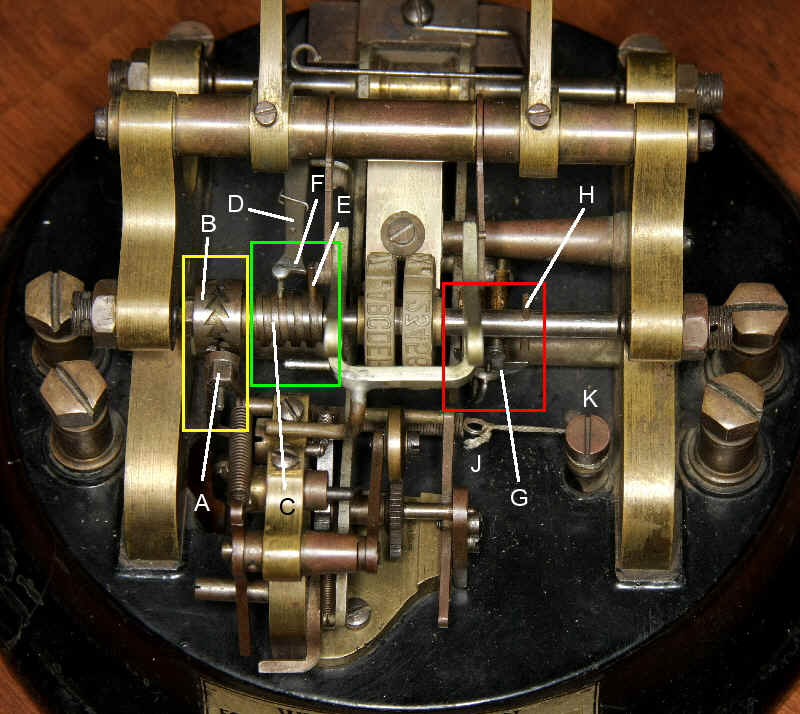
Photo by: Douglas A. Kerr
The 3-A ticker runs from two neutral telegraph loops (I don't know the
current). Simplistically, one loop carries a train of pulses that
operate a magnet that steps the typewheel to the proper position, at
which time those pulses stop and a long pulse on the second loop
operates a magnet that prints the character, then the pulses on the
first loop resume to move the typewheel to the position for the next
character, and so forth.
We see the binding posts for connection of the two loops on the sides
of the base.
(Another ticker genre uses only a single loop. I'll talk about it
later.)
Both magnets in the 3A are under the base. The "stepping
magnet" operates Arm A. A hardened pin on it moves back and forth
between the tool toothed wheels B. Every transition from operated to
non-operated and vice-versa advances the toothed wheels by one
step. The toothed wheels are on a shaft the carries the type wheels.
The bias spring for the stepping magnet is in fact on the top of the
base, operating on lever A. We see its other end at J. A cord runs
from that end to capstan K, which can be turned to change the bias to
get symmetrical operation of the stepping magnet.
The "hammer" for the printing is in fact a wheel (I will
call it the print wheel) and is under the typewheels. We do not see it
nor the mechanism by which the "printing" magnet moves it
up, pressing the tape against one typewheel or the other (the hammer
wheel is only as thick as one character.) Thus the system uses the
familiar "letters-figures shift" scheme.
Four positions in the character sequence are the LTRS anf FIGS
characters (each one appearing twice). Item G (looks like a manta ray)
is a rocker than moves the print wheel laterally. There are two pins
on the typewheel shaft (H is one of them) that, when in the proper
position, strike one "wingtip" or the other of the rocker,
thus shifting the print wheel to the desired position.
Of course the whole operation of this kind of ticker is predicated on
the position of the typewheels at all the receiving tickers being in
synchronism with a wheel at the sending end that is used to determine
when the typewheels are in the proper position for the character to be
printed.
Of course once the system gets started, and if there are no
disruptions to the loop signal, this will just work fine. But at the
very least, when a new station is introduced into the loop, it needs
to figure out just where we are in the stepping sequence. And indeed,
every so often, it would be a good ideal to reset synchronism in case
there had been some disruption to the stepping loop. This is the task
of the infamous unison mechanism.
On the 3-A, the heart of the unison mechanism is drum C, mounted on
the typewheel shaft, which has a helical groove. A pin at the end of
lever D (and lever D is held downward by a light spring) rides in the
helical groove, and works its way to the right as stepping proceeds.
However, in normal operation, the lever never reaches its right-most
travel limit. That's because each time the the print magnet is
energized to print a character, lever D is lifted out of the drum and
a spring pulls it back to the leftmost end of its possible travel.
But suppose no print pulses are sent for quite a while, Then, lever D
continues to the right, When it gets far enough to the right, its
corner F gets in the way of the travel of the tip of pin E, which
extends from the typewheel shaft. This collision stops the rotation of
the typewheel shaft at what we will call the "starting
position". Of course, the stepping magnet through arm A tries to
keep it rotating, but is frustrated by the collision in the unison
mechanism..
The very same thing happens to the timing wheel at the sending end,
and it is halted at the "starting" position.
Thus to attain or regain synchonism, all that is necessary is to
continue sending pulses on the stepping loop but not any on the
printing loop for a while. After enough time had elapsed for all
receivers to reach the "start" position, a pulse is sent on
the print loop. This "prints" the character at the
"start position, but that turns out to be LTRS, so nothing
prints, and the machine is shifted to "letters case",
another valuable initialization. But the operation of the print
magnet, as always, lifts arm D, which in this case clears the
collision, allowing the typewheel shaft to begin moving again.
So when does this happen?
Well, if traffic is light, it happens any time there is a break in the
traffic. If traffic is not light, the operator nevertheless
"periodically" (and I have no idea what time intervals were
typically adopted) stops sending long enough for the unison operation
to play out at all stations (regardless of their state of synchronism
or the lack thereof).
Single loop tickers
Tickers such as the 3-A require two loops for operation, thus
incurring a substantial facility cost. To avert this, another kind of
ticker uses only one loop (albeit with a small penalty in operating
rate). The loop operates on a polar basis; that is, its two states
both have current but of opposite polarities.
In these tickers, the single loop passes in series through both
electromagnets. The "stepping" electromagnet is polarity
sensitive (it having a permanent magnet as part of its construction to
that end). It moves one way for one loop current polarity and the
other way for the other polarity.
The printing magnet responds to the absolute value of the average of
the loop current over perhaps a several hundred millisecond time
window. So it would not respond to the rapid reversals of loop
polarity that convey the stepping signal, but if that were to stop,
regardless of in which polarity, it will respond after a little while.
So the operation was like this. Polarity reversals on the loop moved
the stepping magnet back and forth, operating a mechanism essentially
identical to what see as items A and B in the 3-Auntil it was (assumed
to be) in the right position for the character to be printed. Then,
just as in the two-loop ticker, this train of pulses stopped. But now
there was no pulse on a second loop. Rather, in due time, the printing
magnet response to the now constant loop current (of whichever
polarity).
A disadvantage was that the relatively long time required for the
printing magnet to realize that it was expected to operate slightly
slowed the overall system throughput.
The tape format
Almost certainly the notion of moving the printing "hammer",
rather than for example the type wheels to shift to the
"figures" characters, as initially done because it was
easier. But (and I can visualize trials of an "improved"
machine that would print characters from both sets in a straight line)
it was realized that the tape format resulting from the shifting
hammer - for a stock quotation system, the stock symbol, always
letters, would print in the lower position on the tape and the price
in the upper position - was found to be very advantageous from
an ease of reading standpoint. (So if an "improved"
arrangement was tested, it probably got a bad reception.)
Thus this "expedient" was kept, and in fact, in two
generations of later tickers, the same format was retained (in some
cases, the mechanism had to go rather out of its way to do that).
And, as the author of the recently-referenced paper on the 5-A ticker
points out, in modern quotation systems, using electronic displays,
the same format convention is followed.
************
ADDED PHOTOS AND INFO-
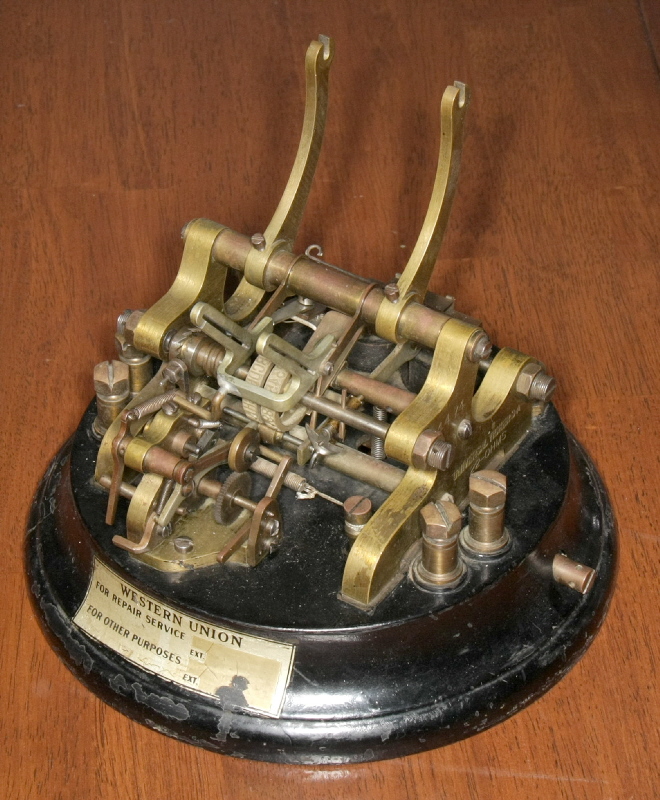
Photo by: Douglas A. Kerr
Three quarter front view. I never had an ink roller or an ink transfer
roller. I originally had the paper supply reel, but during an unpacking or
repacking or whatever it went astray, which cost me about $1000.00 when I
sold it!
People ask about the glass dome which we always see on this general kind
to ticker in the movies. This model did not in fact have a glass dome as
part of the basic product. There were accessory stands for the machine
available, and some of those had glass domes as part of them.
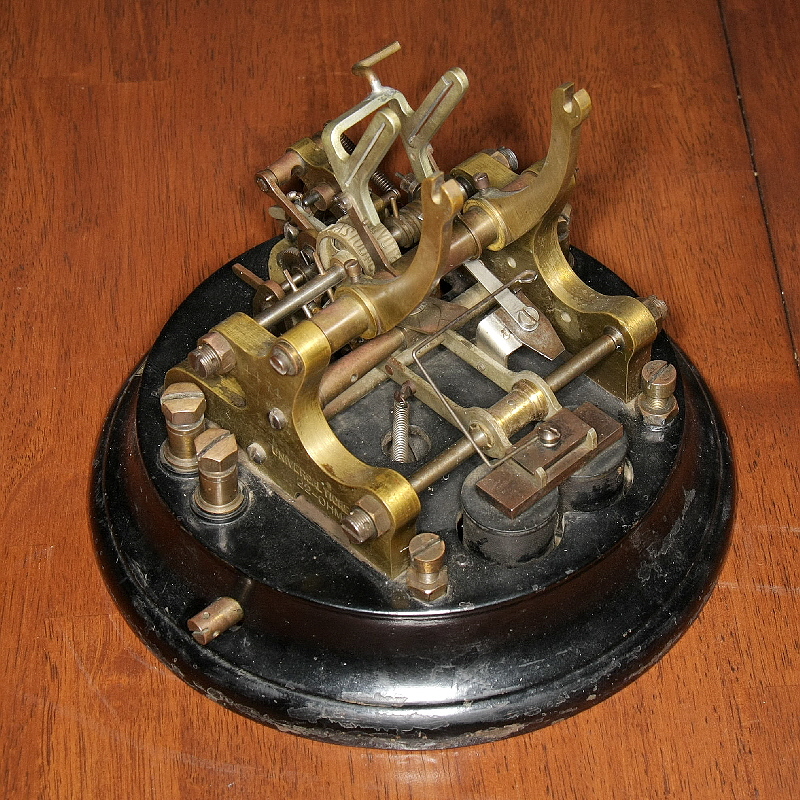
Photo by: Douglas A. Kerr
Three-quarter rear view. We see the printing electromagnet protruding
through the base at the rear, with it armature on top. The shaft
protruding though the base (has a slot in it) adjusts the bias spring for
the printing electromagnet.
The little wire bail on the printing magnet armature igives a little yank
to the paper tape on each printing cycle so it does not "fight"
the feedwheel.
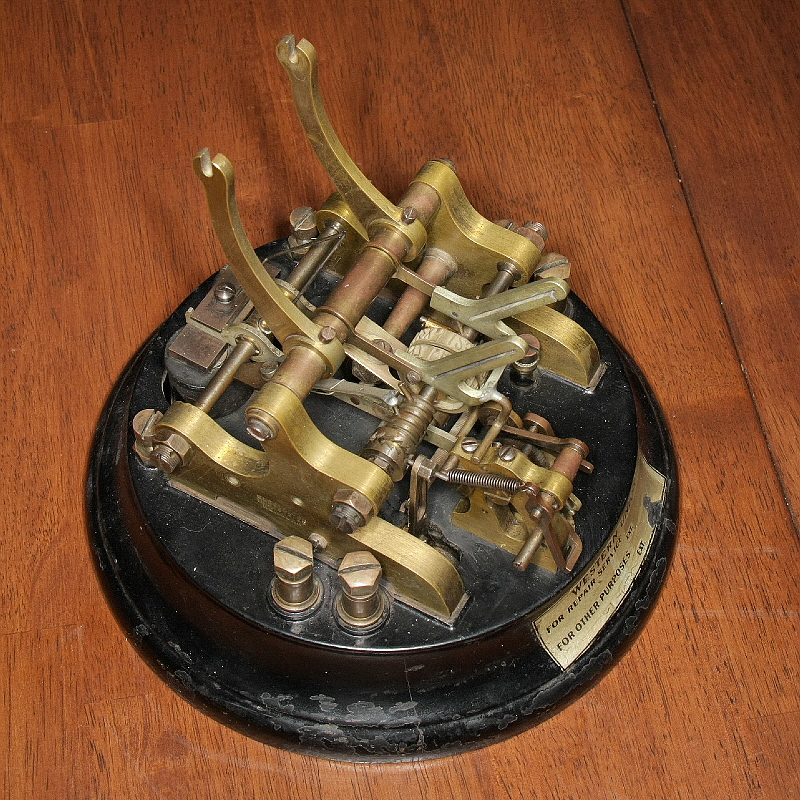
Photo by: Douglas A. Kerr
Three-quarter front view from above. We can nicely see the stepping and
unison mechanisms, as well as the printing armature. The unison arm is
actually mounted on the printing magnet armature, that being the way it is
lifted out of the helical drum whenever the printing magnet operates to
(to "reset" its "countdown"). It is mounted with a
spring so that when the magnet lets it down it is not jammed into the
helical drum if it doesn't at the moment line up with the helical groove.
It will of course drop in as the drum rotates when stepping resumes.
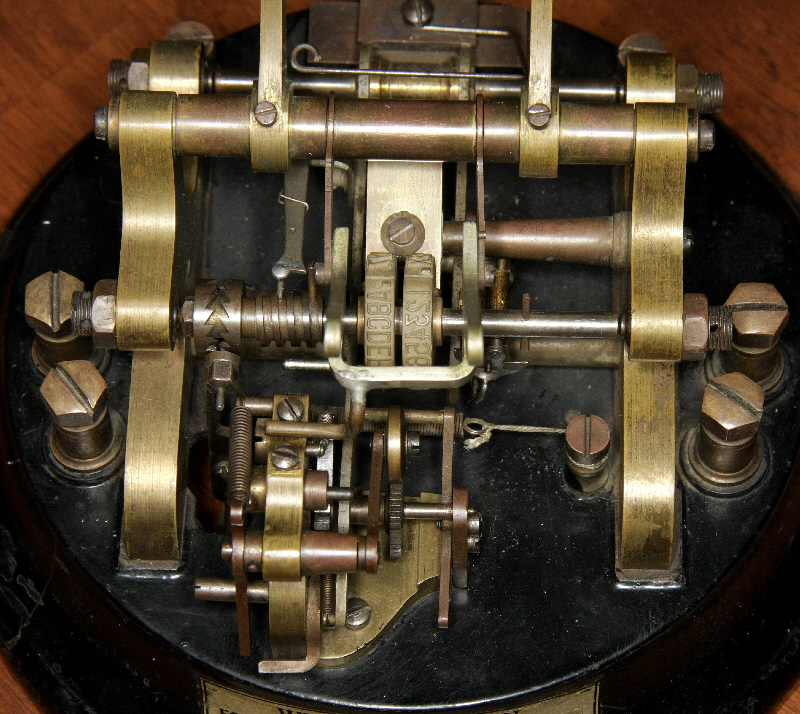
Photo by: Douglas A. Kerr
This is the closeup of the mechanism without the annotation.
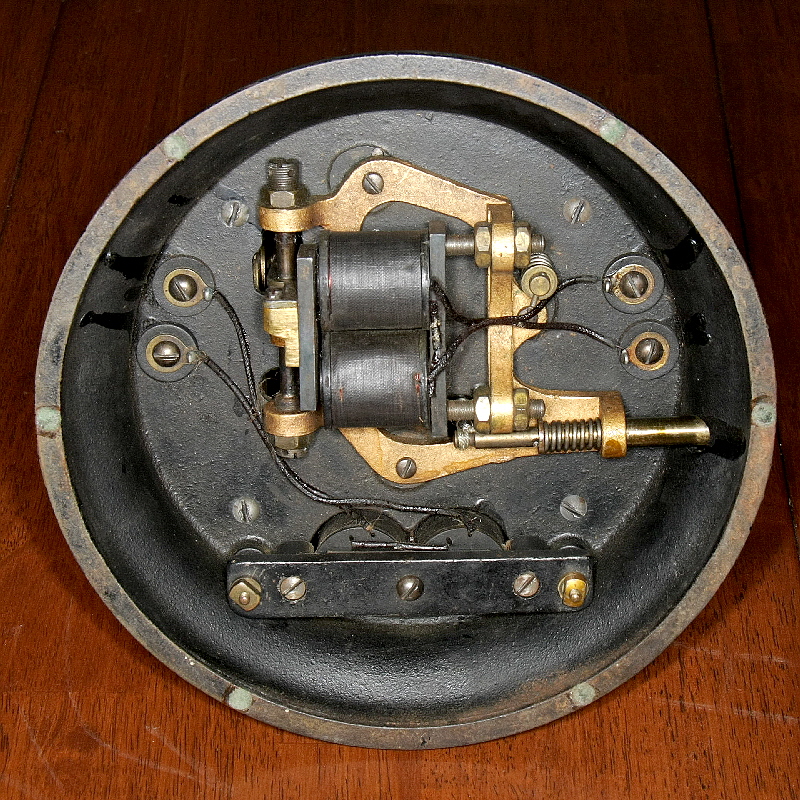
Photo by: Douglas A. Kerr
View from beneath. At the top of the picture is the stepping
electromagnet, its armature to the left. At the bottom is the lower end of
the printing electromagnet.
Interestingly enough the shaft that adjusts the bias on the printing
magnet (yes, it too winds up a little cord) is supported by an ear on the
stepping magnet bracket. (We see it protruding through the base at about
3:00 o'clock on this picture.)
|
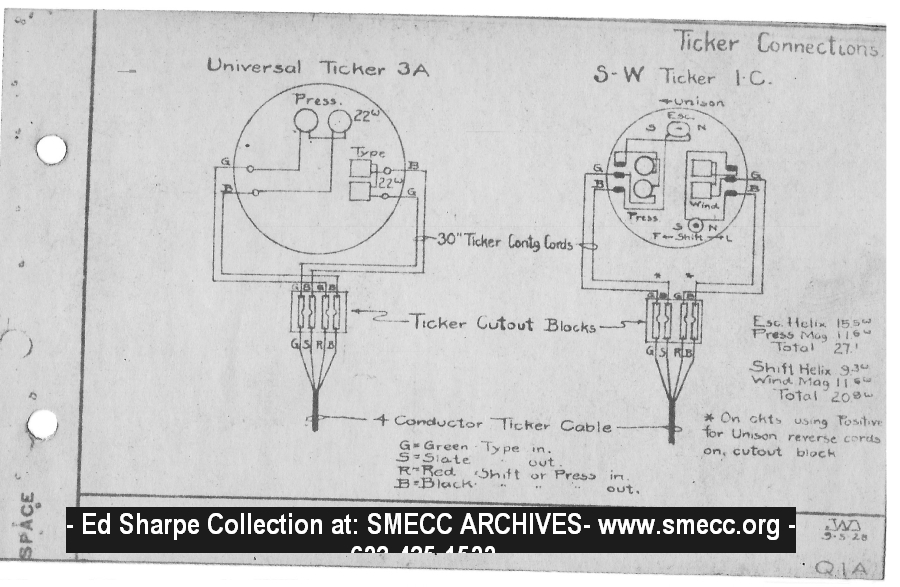
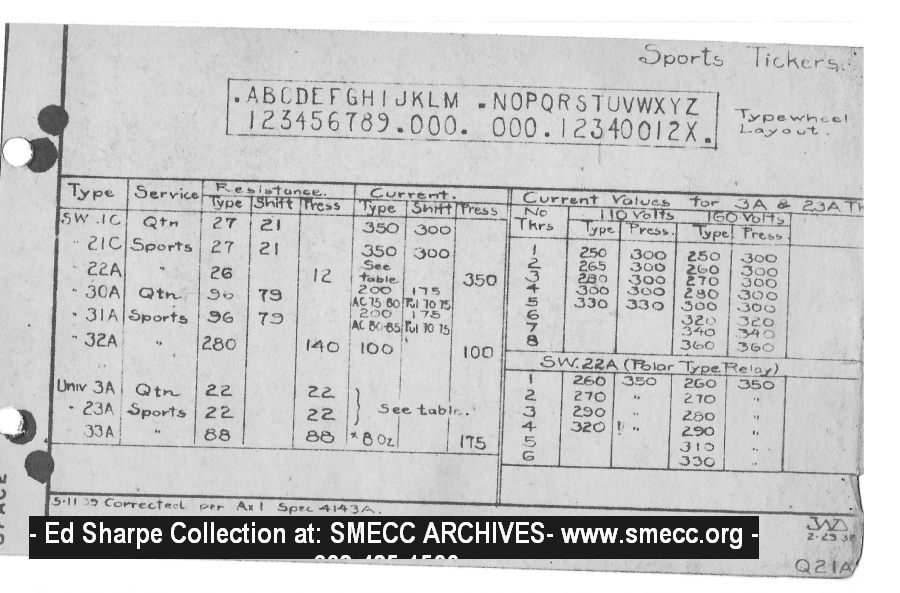
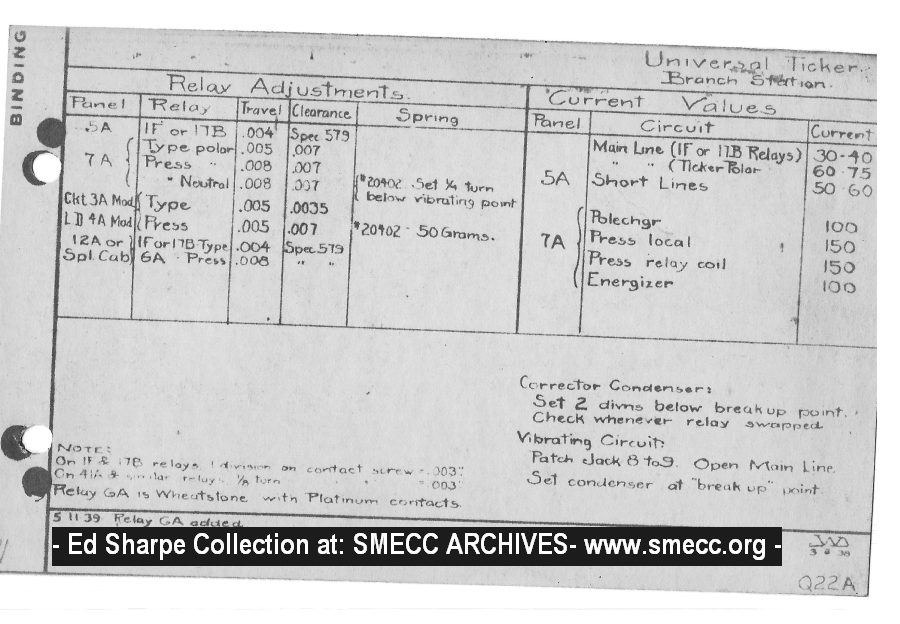

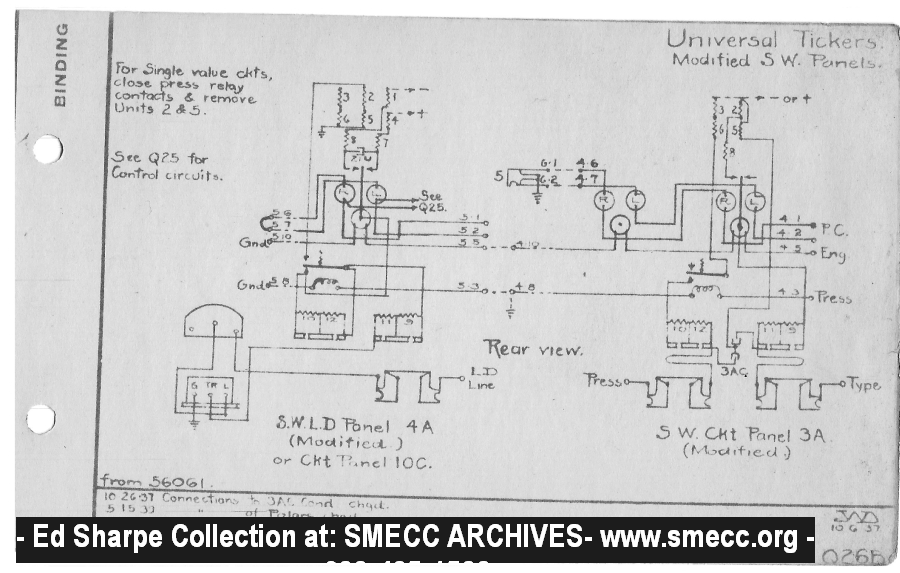
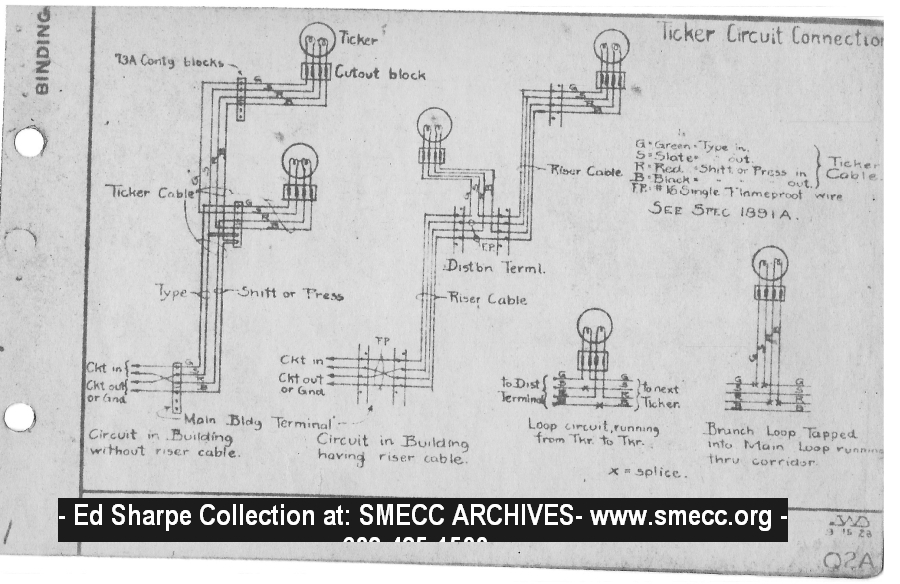
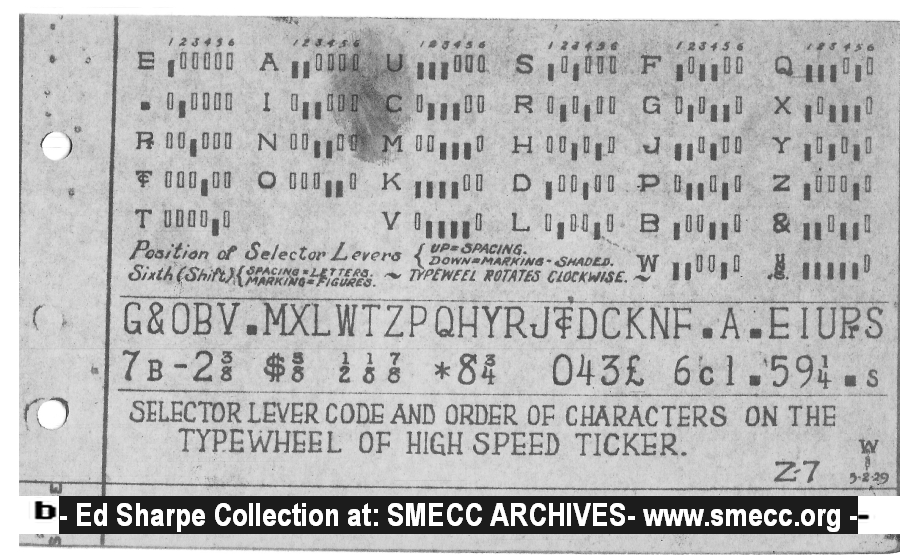
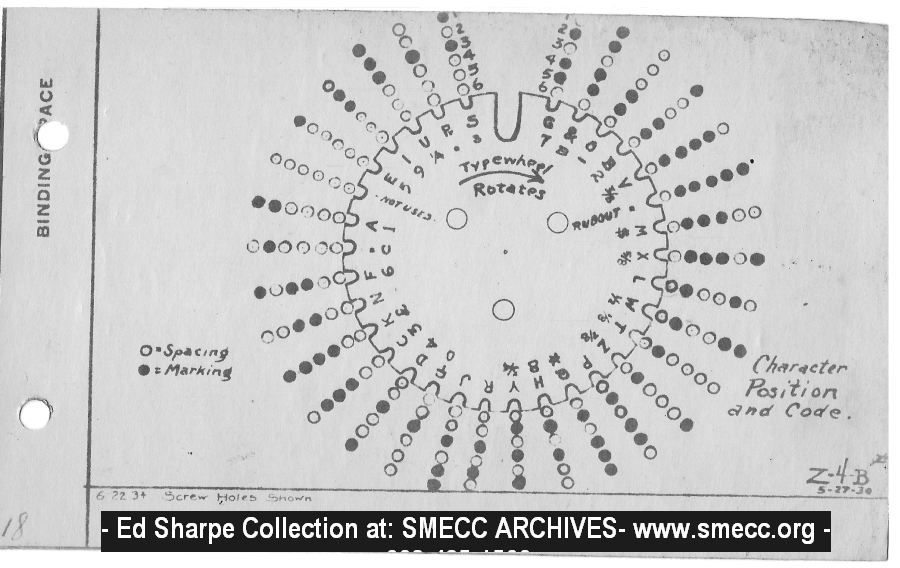
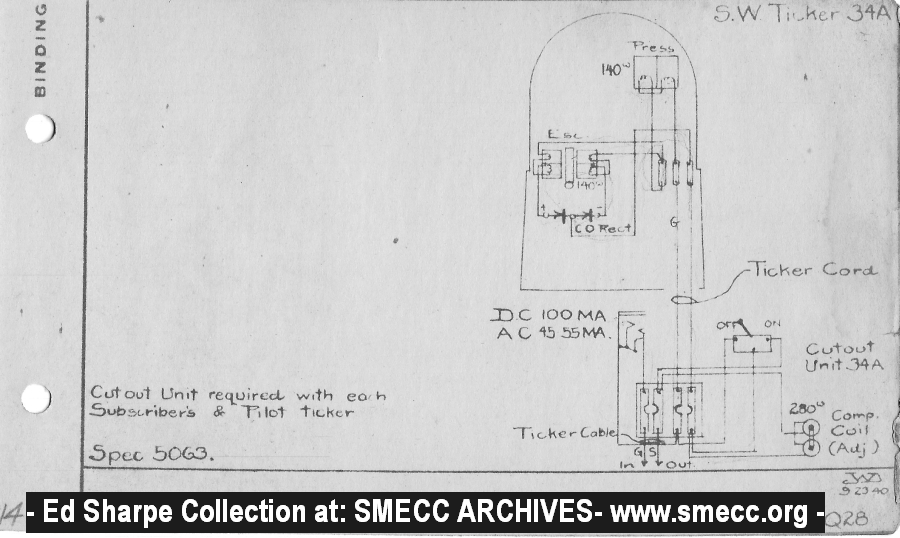
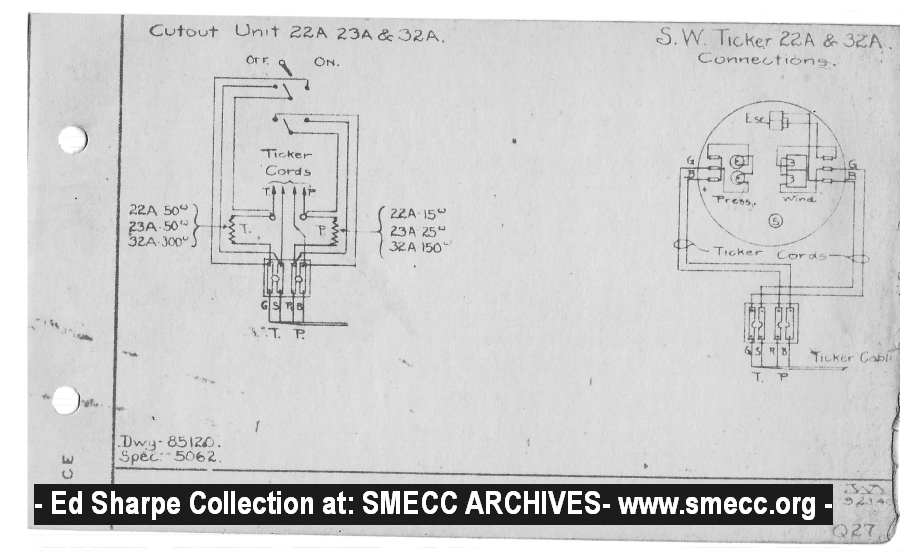
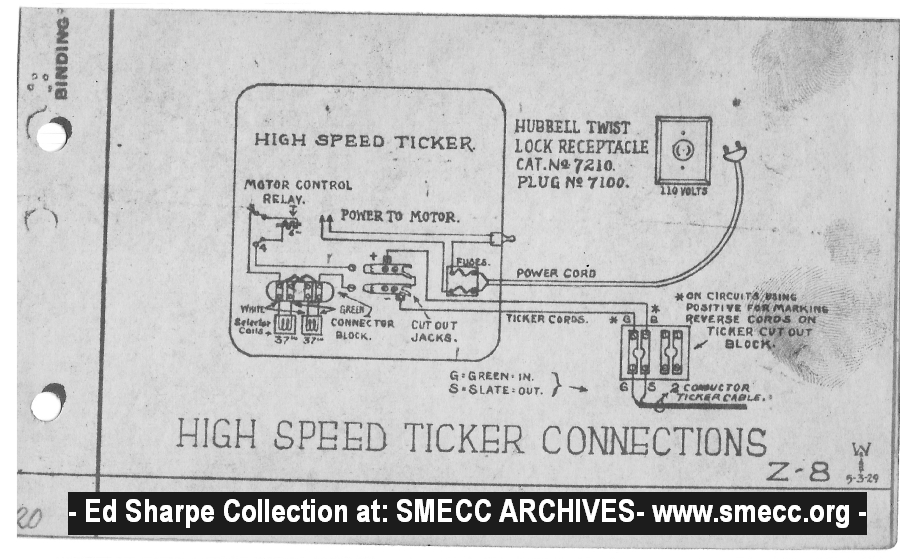
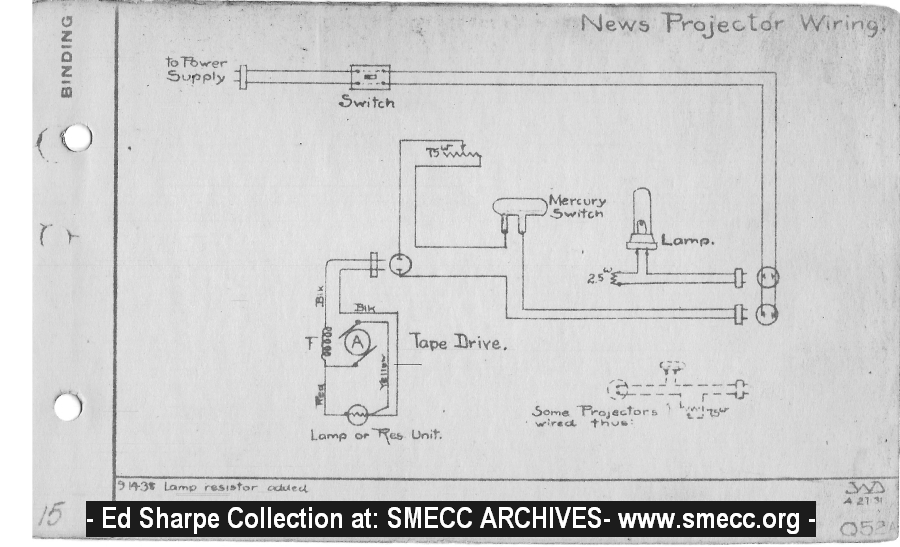
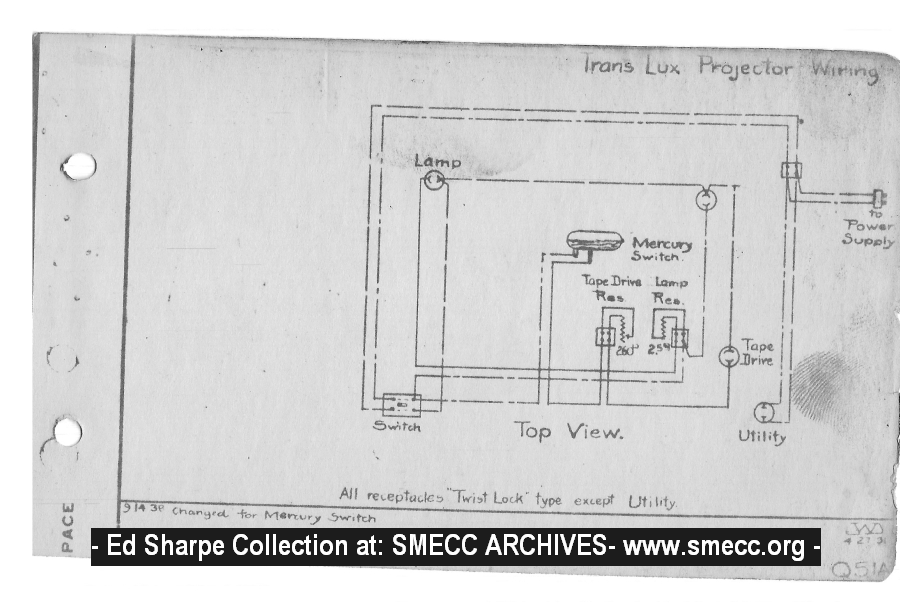
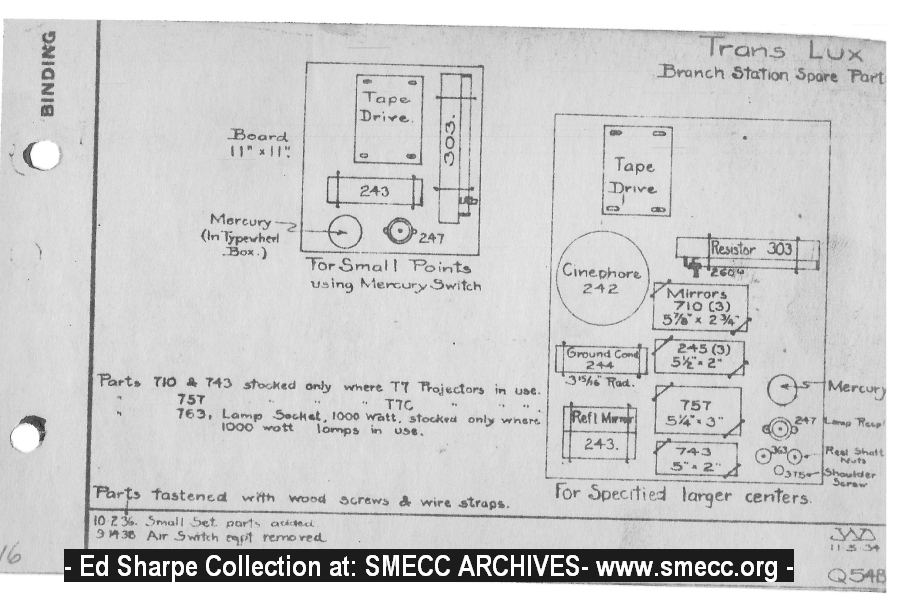
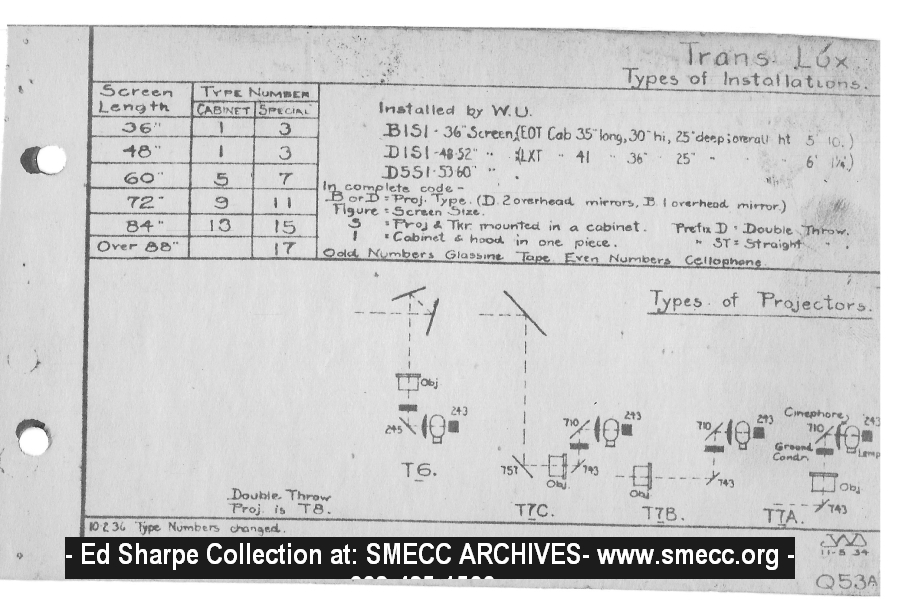
Doug Kerr states : "I remember now, a closely related way of
presenting a telegraph code is called the "ETAINO" presentation
because of its letter order for the Murray code. I had run into references
to that before.
By the way, that turns out to be roughly in order of letter frequency in
journalistic American English (although that is most often cited as "ETAOIN").
I had never until recently known of that relationship, tortured though it
be, for the Murray code.
There is in fact a reference to that in this piece:
http://www.circuitousroot.com/artifice/telegraphy/tty/codes/
Here is a table from that article showing Baudot and Murray codes in
ETAINO order:
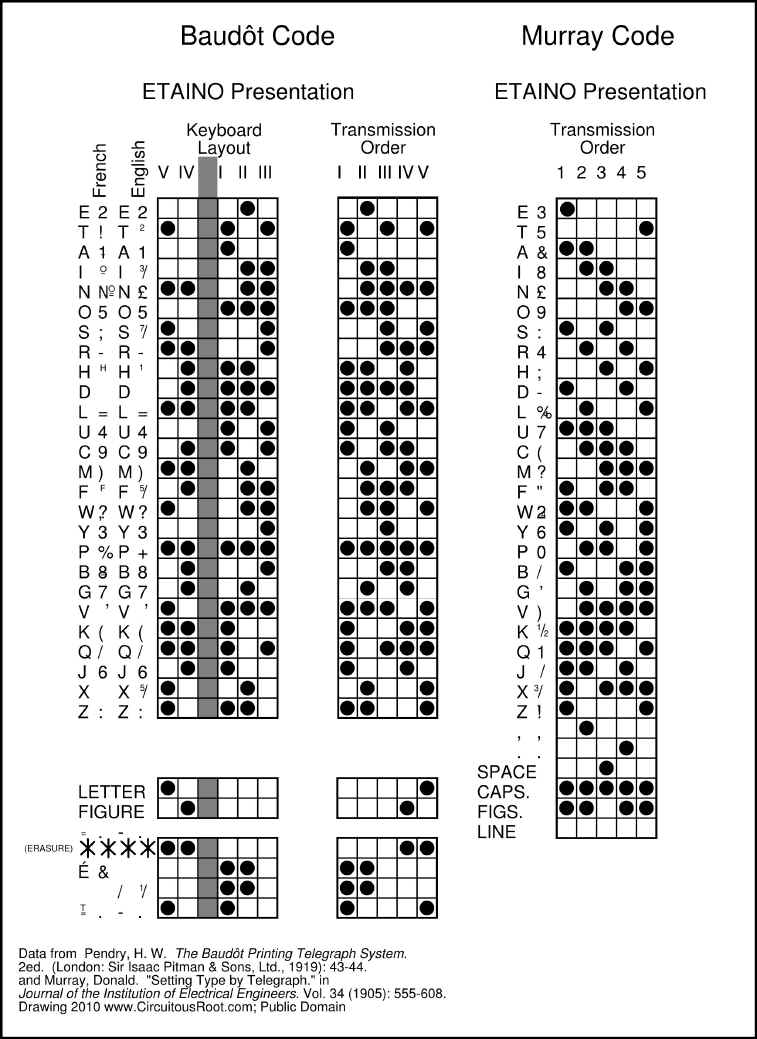
Public Domain image from http://www.circuitousroot.com/artifice/telegraphy/tty/codes/
And this is a passage from that article:
Murray says of his code, relative to Baudôt's, that "The only
difference is in the allotment of the letters to the various
permutations, the Murray arrangement being designed to punch as few
holes as possible in the tape." (Murray, 1905, p. 567 (PDF 602)).
Again, I had not known of that criterion.
I note there his use (mathematically questionable) of
"permutation", so I guess it got an early start."
"Model 37 stock ticker." - By David Kerr
There were always a lot of curious "electropolical" matters
affecting Teletype corporation by virtue of its ownership by the Bell
Telephone System.
Many of these flowed from provisions of the 1956 consent decree that ended
the first major antitrust suit against AT&T.
One of particular interest to us was that Teletype Corporation would not
be allowed to sell to its customers outside the Bell System any products
that were not essentially the same ("of a kind" was the term of
art used) as products sold to the Bell System. (This did not apply to
sales to the US government.)
In about 1964, Teletype introduced a new stock ticker, capable of
operating at 150 words/minute, and thus often called the "900"
ticker ( its speed was 900 char/min). It drew upon many design
concepts of the then-emerging Model 37 teletypewriter line, notably
including the use of an "aggregate motion" mechanism to position
the type cylinder (very similar in concept and design the the aggregate
motion mechanism used to position the typebox in the model 37 page printer
(YP). So there was no doubt but that this was the "Model 37 stock
ticker."
We see it here in New York Stock Exchange livery:
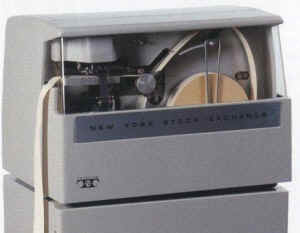
But the suits were very itchy about this. No stock ticker service was
offered by the Bell System and thus they would not be a customer for any
such thing (although it was argued that it was "of a kind" with
what might emerge as the Model 37 tape printer). There was concern that a
legal "flap" over the new product would ensue.
In any case, the printer of the "900" was given the apparatus
code "LST", which would mean "model 28 (or maybe 35) stock
ticker" (and there had of course previously been no such thing),
rather than "YST". Evidently the thought was that this way it
would not be so easily seen in the long lists of "L" units, the
list of M37 ("Y") units being pretty small at the time (in fact
at first this was the only one), and tip snoopers to its emergence.
Burry bulletin printer
BOSTON STOCK TICKERS.
http://www.archive.org/details/electricalworld43newy
VOLUME XLIII
-The announcement is made that
the Commercial-Financial Press Association has acquired the Boston
Financial News and the New England stock quotation service, and
through association with the New York News Bureau has become
Boston correspondent for that association. By reason of the changes,
on and after January 1 the service of the Boston Financial News will
be conducted directly by the Commercial-Financial Press Association,
the absolute control of which is in the hands of an interest closely
allied with the New York News Bureau. The new management will
install within the next two or three months an electric delivery service
by means of the Burry bulletin printer, which has for some years
been successfully operated in New York. The publication offices
of the new association are at 35 Congress Street, and the business
offices at 22 Congress Street. Charles B. Strecker is president and
general manager of the company.
https://www.google.com/patents/US839492
Original Assignee, Charles B Strecker
---------
http://www.archive.org/details/electricalworld43newy
VOLUME XLIII
more fun
from there....
.
Rapid-Type Printing Telegraph.—A note on an apparatus of Siemens
and Halske based on the following principle : A disc, near the
periphery of which the letters of the alphabet, figures, etc., are cut
out, rotates at a speed of 2,000 r.p.m. between a moving strip of
sensitive paper and a spark-gap. Every time the spark jumps the
gap, that letter on the disc which happens to be at the time opposite
the gap is photographed ; 2,000 letters per minute may thus be recorded
on the moving tape, which passes through a developing and
fixing bath, out of which it emerges after about 9 seconds. To obtain
good results, the spark, it is said, must occur with a punctuality by
l/40000of a second, and this has been attained by a suitable arrangement
of condensers. The messages to be sent are first punched on
tape, which is then rapidly run through a rotating sender by means
of which corresponding current impulses in rapid succession are
sent to the line.—Lond. Elec, December 18.
Printing Telegraph Central Station.—Gradexwitz.—An illustrated
description of the tj'pe-printing telegraph service, recently added to
the Berlin telephone service. The instrument used is a teletypewriter
and the station is used at present to transmit exchange telegrams to
a certain number of subscribers. It is, therefore, in the nature of
our stock-ticker. The same system may, of course, be employed
for transmitting telegrams from a central telegraph office to a certain
number of newspaper offices.—Sc. Am., December 26.
April 9, 1904- ELECTRICAL WORLD and ENGINEER. 6&5
WASHINGTON UNDERGROUND WIRES.—A bill introduced
by Senator Gallinger and reported to the Senate with the recommendation
for favorable action by Senator Foraker from the Senate
Committee on the District of Columbia, requires all telegraph wires
in the District to be put under ground under penalty of a fine of
$25 per day.
GAMBLING BY TELEPHONE.—Mayor Harrison has appealed
to the Chicago Telephone Company for its co-operation in suppressing
pool rooms and "hand books". Warfare on tickers has
resulted in substituting telephones and the company finds itself in
the peculiar position of a common carrier obliged to accept and maintain
the secrecy of all business offered to it in ignorance of its purport,
and the operators are forbidden by the rules to listen in to
determine whether gambling is being conducted. Listening or "tapping
off" the line is in direct violation of the law.
|
|
Making a model 10
printer talk like a Teletype!
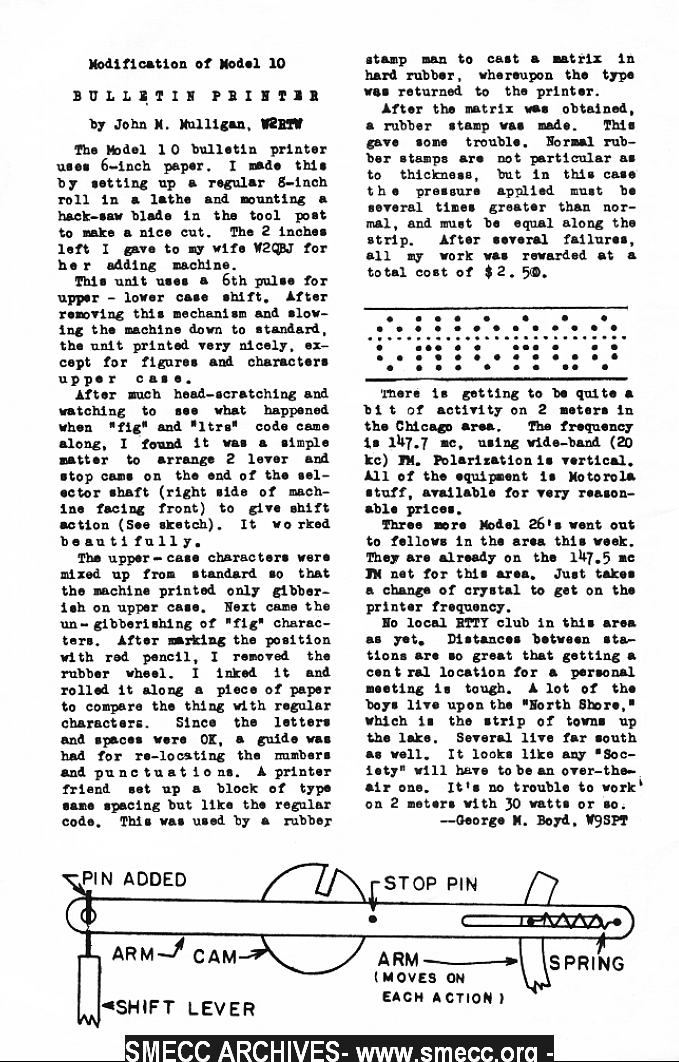
ARTS March 1955 issue, the one which has "GQ" and a
picture of a tape reader and
distributor on the cover and is #36. Starts on page
17. WHAT IS, AND WHO MADE MODEL 10?
ARTS - Amateur Radio Teletype Society History and
Bulletins
From the Jim Haynes, Red Wilson and Ed Sharpe collections at SMECC
can be found here: http://www.smecc.org/rtty_ratt_radio_teletype.htm
|
|
|
AWA BROAD TAPE STOCK NEWS TICKER
on display at the AWA museum.
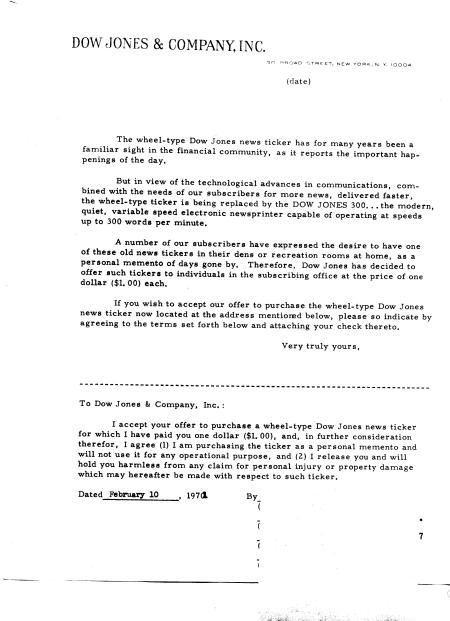
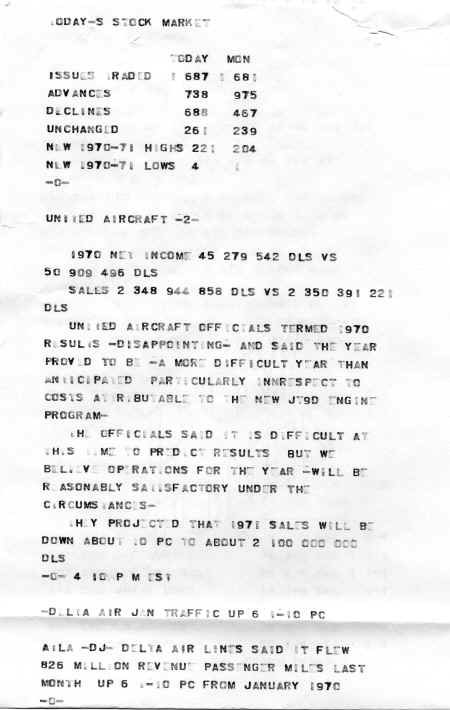
Photo credit AWA.
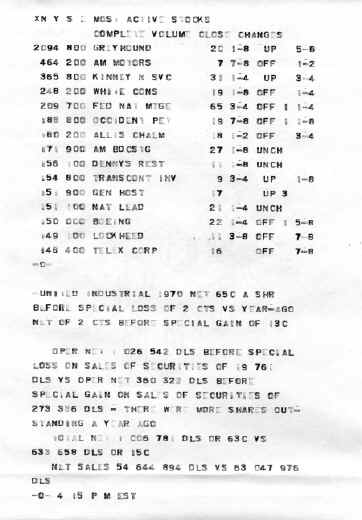
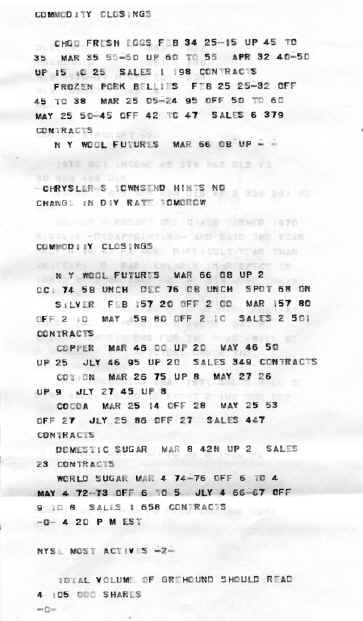
Photo credit AWA.
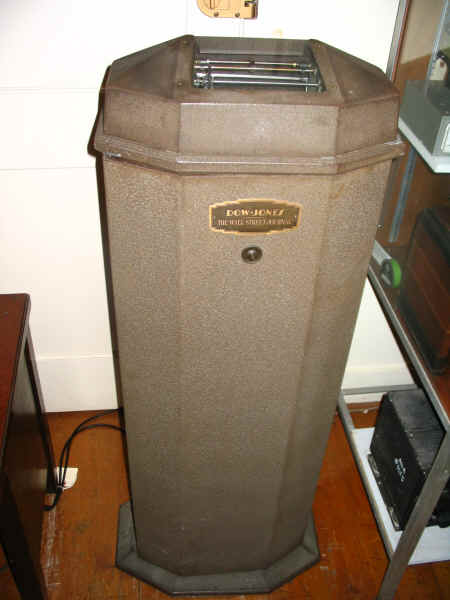
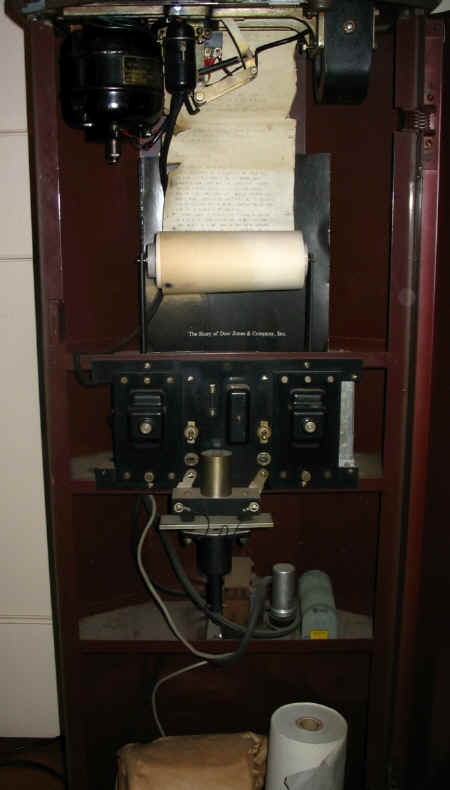
Photo credit AWA.
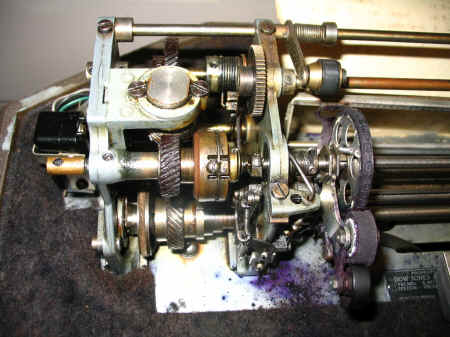
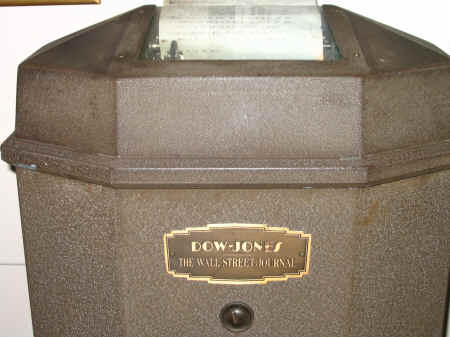
Photo credit AWA.
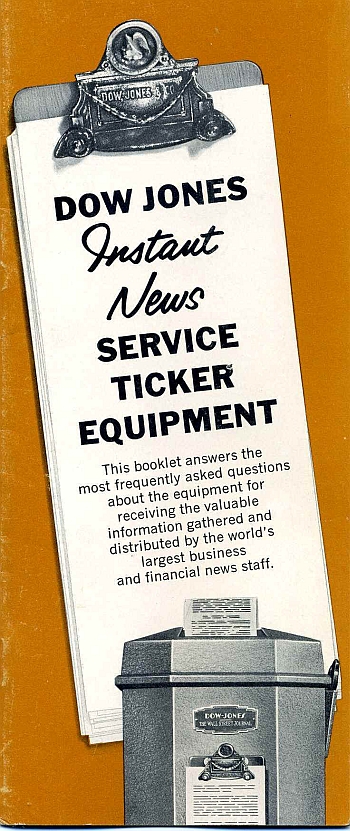
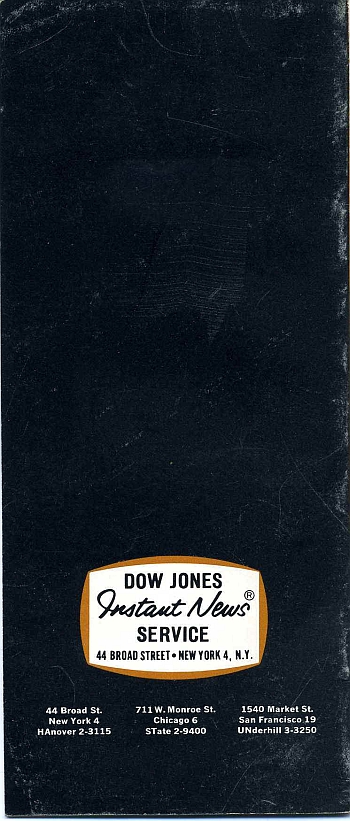
Photo credit AWA.
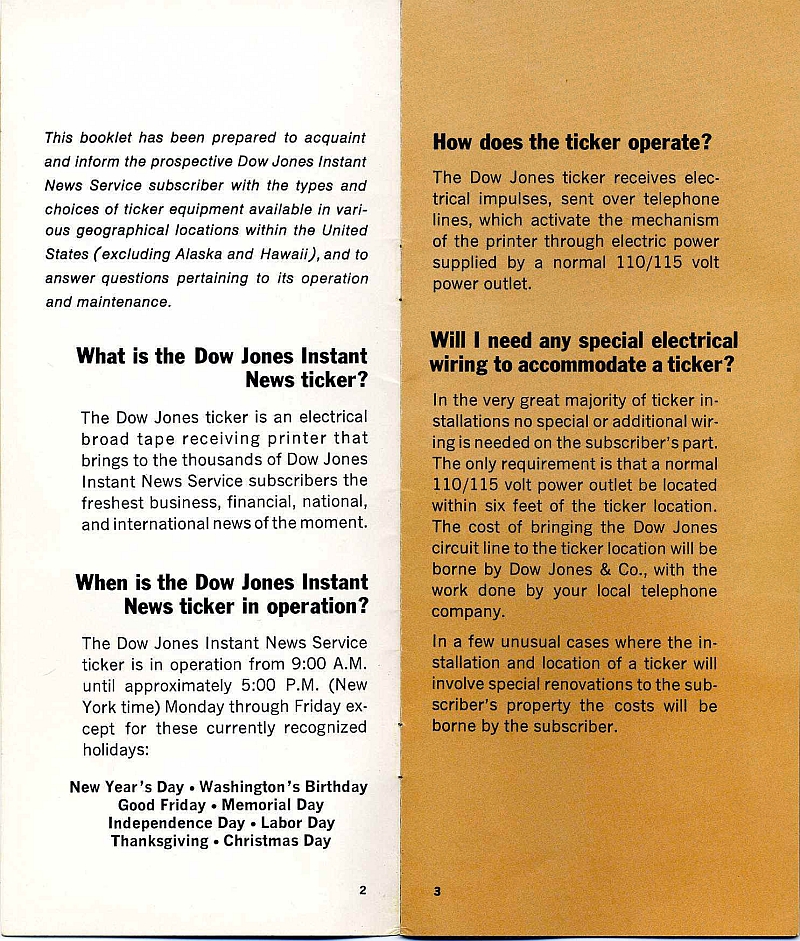
Photo credit AWA.
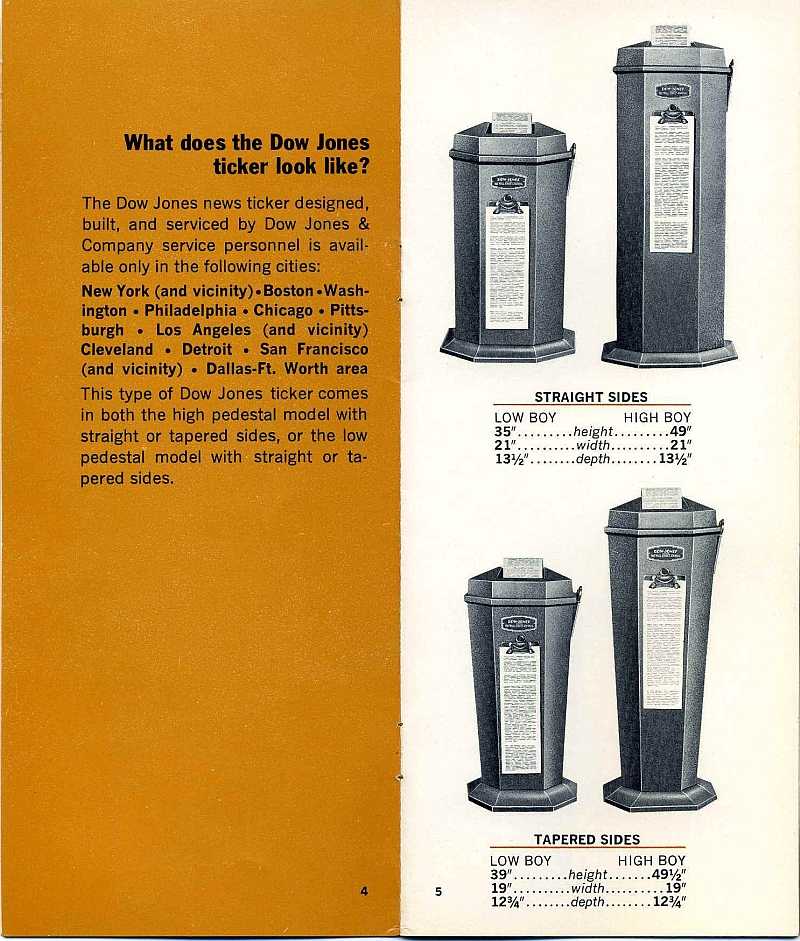
Photo credit AWA.
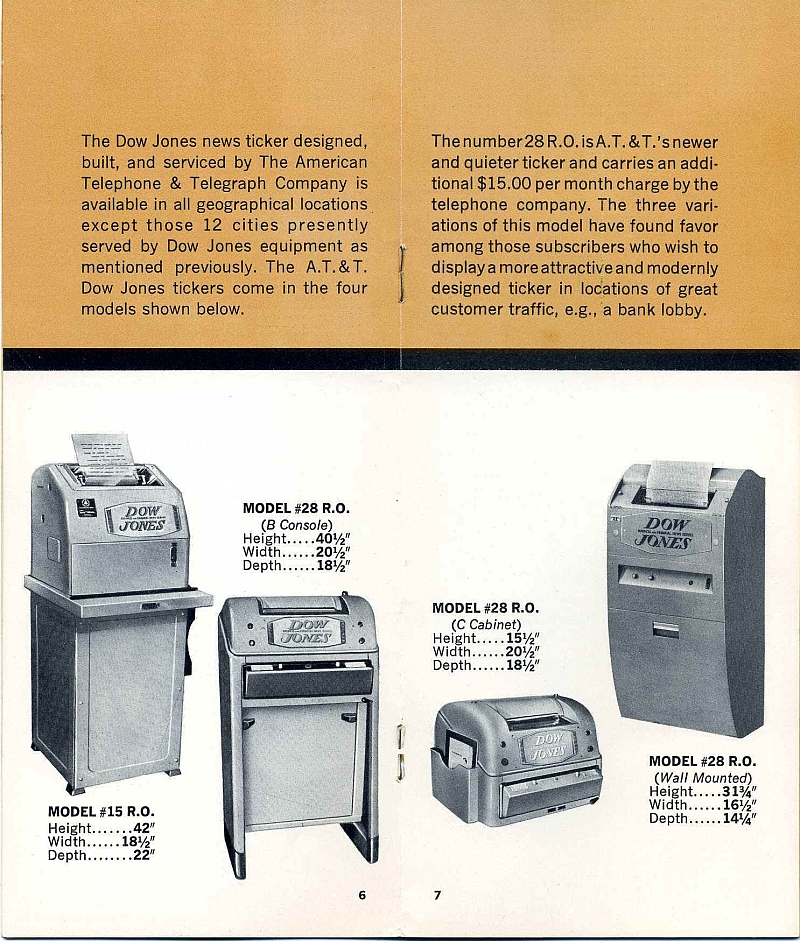
Photo credit AWA.
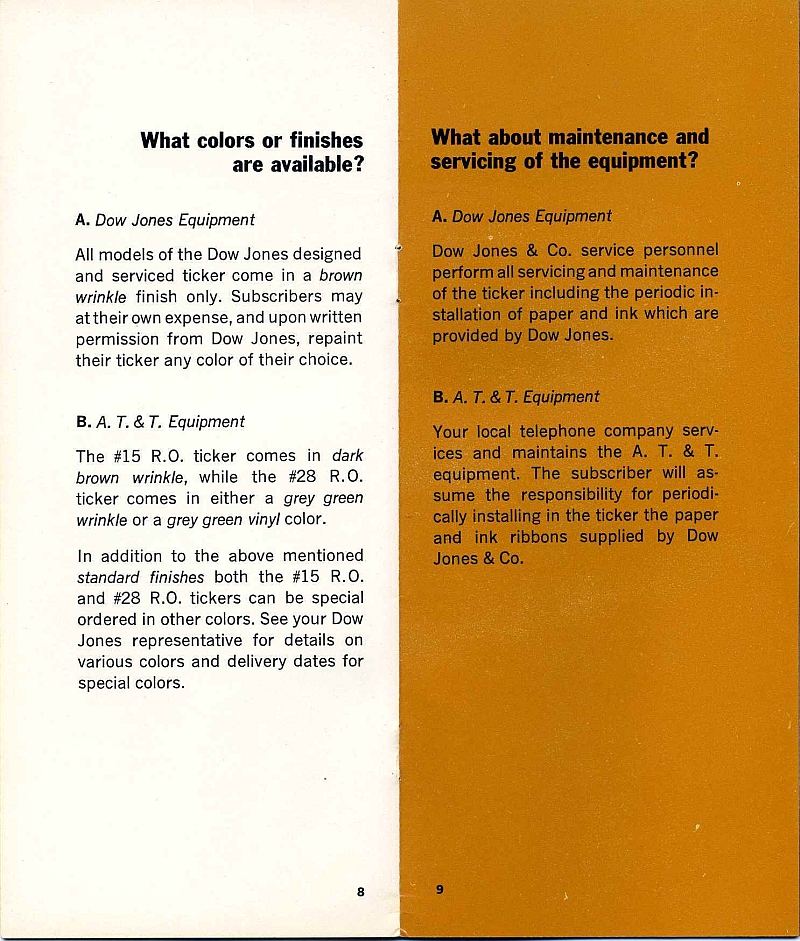
Photo credit AWA.
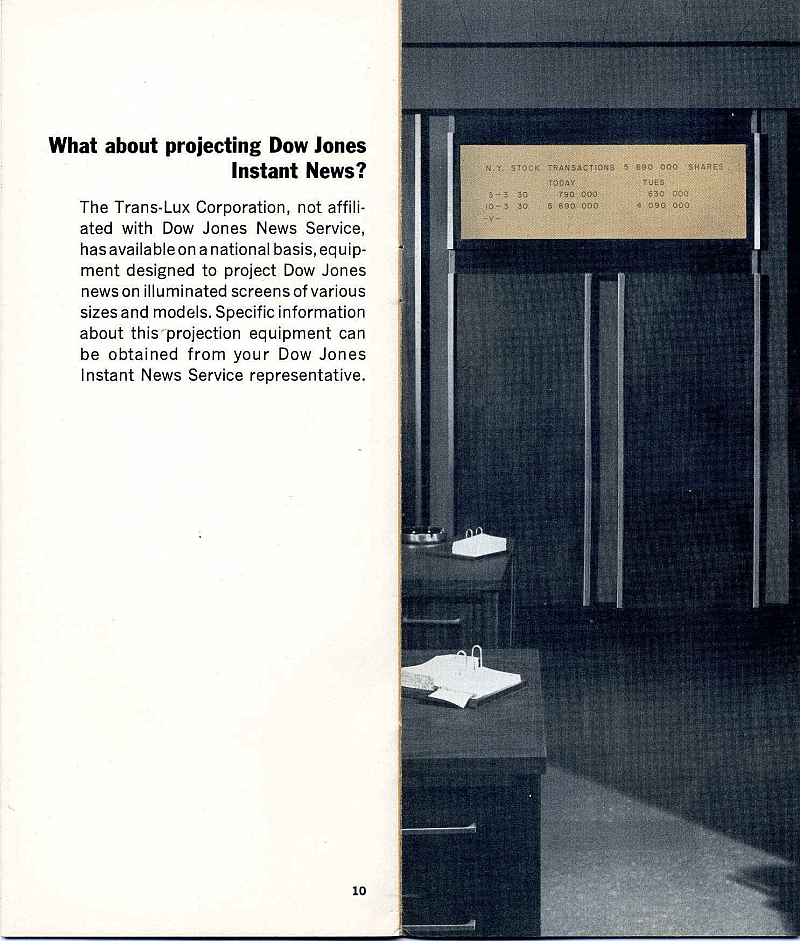
Photo credit AWA.
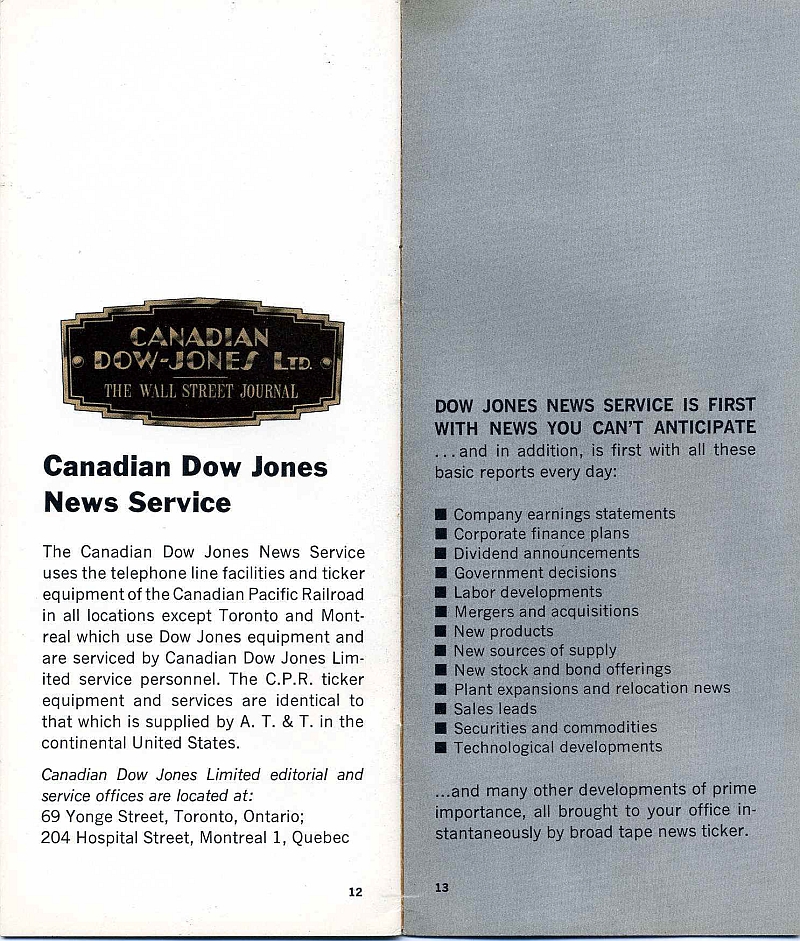
Photo credit AWA.
|
|
|
|





































